PRESIDENT’S MESSAGE
Greetings, PSWA Members:

It’s been a difficult 2 ½ months, with the stay at home orders, trying to minimize our public contacts, and maintaining our social distancing when it is necessary to go out into the world. With schools closed, businesses only having delivery meals, and no more congregating or large gatherings, it puts a strain on us all.
I urge you all to abide by the new standards, designed to defeat this covid19. The more people who take these measures seriously, the sooner this disease is defeated and we can return to our normal lives and interactions.
Which brings me to the question of what will be done about our July conference? Yes, it is still three months away, and I am confident by then things will return to normal and the ban on large gatherings will be a thing of the past. However, that is just my prediction, and I may be very wrong. Just today (April 2) Keith Bettinger notified me that the governor of Nevada has ordered the closing of everything (businesses?) and issued a stay at home order until May 1.
Should we still be under the current restrictions, we would have no choice but to cancel or reschedule the conference. Which way we go is still under consideration. Rest assured that we, the board, are considering our options and will ultimately choose the one that not only keeps us all the safest but will be in accordance with the procedures in place at the time of the conference.
Our conference attendee registrations are down a bit—understandably so—but we could see a surge of new registrations if/when the restrictions are lifted. We need all of you to help spread the word about the conference, and steer potential attendees to our website for more info on our special pricing.
Should we have to cancel, the Board has approved either a full refund of your registration fees, or the option of rolling it over to next year’s conference. The June 15 refund cutoff date has been suspended.
We have also approved lowering the conference fee to the early-bird price—$240 for the full conference— for anyone who registers for the conference after April 1. The other fees listed at the website remain the same.
Mike Black has been hard at work arranging the conference speakers and will be developing the panels soon. Our key-note speakers are listed at the website, so stop by and take a look. As usual, they all are exceptional writers and speakers.
Start talking up the conference. Convince people to register now. After all, with our lower fees, and refund policy, they have nothing to lose.
Don’t forget the writing contest deadline for entry is April 15. Get your stuff to Barbara Hodges soon. Who knows—you may be able to proudly say you are an award winning author after the contest. Check the website for more details on entering.
One last item. Gloria Casale has resigned as our secretary. She found her recent circumstances no longer allow enough time for her to work as the secretary. Keith Bettinger, who was our secretary a number of years ago, has agreed to assume the position. Thank you Keith!
So, keep the faith, folks. If at all possible, our plan is to have the conference at the scheduled July date, and we will do our utmost to make it the best one ever!
Wishing you all good health,
–John Schembra
President
Award Winning Author
MESSAGE FROM THE PSWA WRITING CONTEST CHAIR
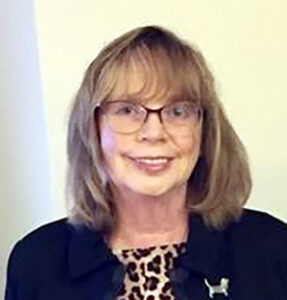 As you read this the cut-off date for the PSWA writing competition has passed, great writing as usual. It’s now up to the judges to decide the winners. I don’t envy them their jobs. I’m hoping the virus upheaval will be behind us, or at least settled to the point that our conference in July isn’t canceled. Even so, rest assured. All winners will receive their award certificates. It’s just more fun to be there and see their faces when their names are announced.
As you read this the cut-off date for the PSWA writing competition has passed, great writing as usual. It’s now up to the judges to decide the winners. I don’t envy them their jobs. I’m hoping the virus upheaval will be behind us, or at least settled to the point that our conference in July isn’t canceled. Even so, rest assured. All winners will receive their award certificates. It’s just more fun to be there and see their faces when their names are announced.
This first time as chairperson for the writing competition has been a learning experience and it isn’t over yet. A big perk is getting to read a lot of the entries before I send them off to the judges. I have my favorites and am looking forward to seeing how they do in the competition.
You’d think with the shelter in place order going on I’d find more time to work on my book in progress. I can’t say why, but it hasn’t happened. I’m staying home for the most part. Doing the store thing when it’s required, hopping over to Santa Maria a couple times a week to spend some time with my mom. My exercise class is on hiatus until things settle back to normal. So, what am I doing all day that is keeping me from my writing? I really don’t know. It seems like bam, the day is over. Is it like that for the rest of you?
I found the whole toilet paper issue amusing. It was crazy to go down that aisle at the store and see it completely bare. One day I was in our local Vons and there was no bread. Not one loaf. The same day, no hot dogs. My husband had put in his order for a 12 pack of Firestone DBA beer, luckily, I had no problems filling that request.
One night’s newscast said that the shelter in place orders were causing more domestic violence locally. I guess there is such a thing as too much togetherness. I overhead a man at the park talking about this wife. He was there playing tennis and said he had to get out of the house for a bit because he was getting “short” with his wife.
The virus has also brought out the good in folks. My across the street neighbor made it a point to check and see if I needed anything when she was going to the store. When I said, paper towels, she told me she had some extra rolls and brought me one over.
My mom lives in a senior mobile home park in Santa Maria. I love what they did there. They gave each home a letter with one green and one red note card. The letter instructed them to place the red card in the window if they were in need of help and place the green one in the window if everything was fine with them. Then a group of helpers drove the streets seeing who was in need of aid. I think that was a fantastic idea.
So that’s how things have been in my neck of the woods. How about yours?
I’ll close with that I’m hearing and saying a lot right now. Be smart, stay safe and well.
–Barbara M. Hodges
DRAWING A PICTURE OF A PLOT
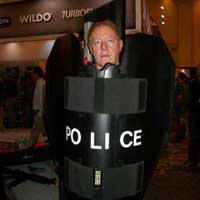 My home state is still under the covid19 shelter in place order as I’m writing this article for the newsletter. I’m hoping that by the time you’re reading it, things will be a whole lot better. Looking on the bright side, this has given us the opportunity to do some things we’ve been putting off, like working on that manuscript.
My home state is still under the covid19 shelter in place order as I’m writing this article for the newsletter. I’m hoping that by the time you’re reading it, things will be a whole lot better. Looking on the bright side, this has given us the opportunity to do some things we’ve been putting off, like working on that manuscript.
So, let’s get on with talking about writing.
I teach a creative writing class at a local junior college and one of the things I’ve noticed is a lot of people have trouble plotting. Basically, plotting is divided into two schools of thought. You have the plotters, or those who work out the plot before they begin writing, and the pantsers, who, as the word suggests, just sit down and write by the seat of their pants. I’ve done it both ways and I’ve come to believe that plotting in advance of writing is the best way to go. You save a lot of time and effort if you know where you’re going before you start. Just sitting down and seeing where the muses lead you is a lot of fun sometimes, but it’s real easy to go off and a tangent and ending up with a lot of unusable pages, or writing yourself into a corner.
Neither method is an absolute. While I tend to plot things out beforehand by making an outline, nothing says that I can’t change this outline as I progress through the writing. In fact, I usually do. I’d say I change the outline four to five times during the course of writing a novel. And I’m sure there are pantsers who figure out the ending beforehand.
The outline is an infinitely valuable tool, however. Before I begin a new section, I like to have a list of the things I need to accomplish in that scene. With an outline, I have this ready. All I have to do is copy and paste that section of the outline to my manuscript page and I can refer back to it as I write. It’s like having a roadmap. And when I finish writing for the day, I know exactly where I have to pick up the next time I sit down to write. (I suppose this would also apply to those of you who write while lying down or standing.)
Another method that was suggested to me by a writer friend is sketching the scene before writing it. By this I mean making a diagram of the place I’m writing about. If it’s a town my protagonist is riding into, I’ll do a quick sketch of it, listing the buildings he’ll see as he comes down that main street. I picture it in my mind, and it allows me to see what the character is seeing. It also helps me figure out special differences. If I have my hero walking up the stairs in a flea bag hotel while the bad guy is waiting upstairs to conk him on the head, I need to know where the bad guy is hiding and where exactly the hero will be when he’s attacked. The same goes for detailing movement. If I’m setting a scene in a room, I do a quick sketch of what the room contains. Are there chairs, a bed, a table, etc. that someone might trip over or pick up? I’ve found this immensely helpful and have used it to literally work out the action of a scene before I write it.
I also used pictures and diagrams to plot out a scene. I’m including a graphic representation I did of a short story by Gogol called “The Nose.” Some of you might have read it in school. I had to do that several times. I came up with the sketch of the story while I was in grad school some years ago to illustrate how the technique of sketching out a scene can be beneficial.
 The Graphic Representation of Gogol’s “The Nose.” The story is a satire of the bureaucracy that plagued Russia in the 1830’s, and I didn’t find it particularly enjoyable. It deals with a man finding a nose belonging to an official in loaf of bread one morning. He tries to get rid of it and ends up trying to bribe the cop who catches him. The man whose nose it is, wakes up to discover its absence, and subsequently sees his proboscis living the high life without him. Eventually the nose is returned by the cop who caught the first guy trying to get rid of it. Of course, the cops are portrayed as corrupt and idiotic, so that’s why my professor had us read it in her class. Hmm, I wonder if this one would fit in our PSWA Writing contest? But I digress. See how easy it is to go off on one of those tangents? In the end of the story the official wakes up and finds that his nose has returned to his face and he celebrates by snuffing some tobacco and anticipates some carnal desires. I hesitate to speculate if Gogol was trying to inject some social commentary or health warning about the dangers of tobacco usage besides his satirical view of corrupt Russia after Peter the Great introduced the Table of Ranks in 1733, which allowed commoners to gain nobility and social status by service to the state. (It was abolished eighty-four years later when the Communists took over.) Plus the version I read was an English translation of the Russian prose, and I don’t like to read translations.
The Graphic Representation of Gogol’s “The Nose.” The story is a satire of the bureaucracy that plagued Russia in the 1830’s, and I didn’t find it particularly enjoyable. It deals with a man finding a nose belonging to an official in loaf of bread one morning. He tries to get rid of it and ends up trying to bribe the cop who catches him. The man whose nose it is, wakes up to discover its absence, and subsequently sees his proboscis living the high life without him. Eventually the nose is returned by the cop who caught the first guy trying to get rid of it. Of course, the cops are portrayed as corrupt and idiotic, so that’s why my professor had us read it in her class. Hmm, I wonder if this one would fit in our PSWA Writing contest? But I digress. See how easy it is to go off on one of those tangents? In the end of the story the official wakes up and finds that his nose has returned to his face and he celebrates by snuffing some tobacco and anticipates some carnal desires. I hesitate to speculate if Gogol was trying to inject some social commentary or health warning about the dangers of tobacco usage besides his satirical view of corrupt Russia after Peter the Great introduced the Table of Ranks in 1733, which allowed commoners to gain nobility and social status by service to the state. (It was abolished eighty-four years later when the Communists took over.) Plus the version I read was an English translation of the Russian prose, and I don’t like to read translations.
Anyway, I hope you can see how doing some sketching can assist you in your writing. As dumb as the plot is for “The Nose,” the above sketch is sort of an outline. It gives you the story in a scene-by-scene sequence. You can pick out the pacing and the slow spots, figure out if you want to shift one scene to another place, and you can also figure out where you are in the story.
Okay, well, that’s my two cents as far as writing advice. So now put your butt in the chair and get busy. I hope to see you all at the next conference.
–Michael A. Black
Conference Chair
PATIENCE IS A VIRTUE AND LIFESAVER

Having been a police trainer for more than 20 years causes me to watch cop shows, news, and movies with a critical eye. Reality shows are the worst for me. I watch as some officers involved in pursuits finally get the car stopped only to expose themselves to danger or create dangerous crossfires. While I applaud their aggressiveness and desire to apprehend the subject, I cringe at their poor tactics. We know that any traffic stop is inherently dangerous. Those that involve a pursuit are extremely unsafe since it’s obvious the driver does not want to be apprehended.
Similarly, room and building entries pose the same deadly risk. The fatal funnel is so named because it’s the spot where thugs have the easiest and best opportunity to take us out. Officers that stop within the door opening, or slowly move through it, are at the greatest risk. What causes us to abandon our training and employ tactics that put us and our colleagues in danger? Adrenaline rush for one, not knowing what awaits us inside—someone with a gun or other weapon—or perhaps a victim calling for help. The irony is that if we go down, that person counting on us for help never gets it. It only takes a couple of seconds to make a quick entry plan and proceed cautiously.
Some other behaviors that make me uncomfortable are officers who nonchalantly handcuff individuals. Whether you’re just temporarily detaining them or actually arresting them, placing handcuffs on someone is a moment fraught with potential violence. Anytime someone realizes they are about to lose their freedom their psyche becomes supercharged. The spectrum of reactions varies from one of complete obedience to outright resistance and flight. If you are putting the cuffs on anyone, it should be done quickly and authoritatively. A lackadaisical approach may signal the subject that you’re unprepared for his resistance. It pays to use the same cuffing technique each time, and that also includes removing the cuffs as well. Be safe, cautious, and quick.
Car stops are difficult, particularly for one-man units dealing with multiple occupants. Don’t be reluctant to control drivers and occupants. If warranted, place the passenger in your patrol car after he’s been patted down and cuffed so you can fully concentrate on the driver and vehicle. Never put anyone in your unit without a pat down! Hopefully, you’ve requested backup. Be patient and wait for help to arrive before any vehicle search is conducted, particularly if the driver is acting sketchy. If you’ve run the tag and driver’s name, be aware that if it comes back with a hit, and the subject hears the radio, he’s likely to run at that point.
Most of this is just common-sense police work—things you’ve learned during training or on the job. The problem is that we get so busy and go from 0-100 in seconds that we sometimes like to take the quickest route without regard to safety or sound tactics. Sometimes it’s a good idea to get together with sector cars that usually back each other up and talk about some incidents worked jointly. Ask each other about things that were done well or that have could have been done better. What tactics worked well, and which didn’t. Could we have positioned ourselves or our cars better, or did the situation warrant that we had no other options?
One of today’s big problems is many departments are short on manpower. Little or no time exists for training when officers are working 10 and 12 shifts and sometimes working doubles. Add court into the mix and training time is down to zero. The best option is to get together with colleagues and at least talk about tactics and other problems. Firearms training is another opportune time to put your heads together and discuss best practices. New hires in particular are like sponges and listen to every word seasoned cops talk about. We’ve all been there—we learned from those who preceded us and survived the streets. The academy will never replace working the street, so it’s up to us to bring the newbies along. Remember, these same guys and gals are backing us up. Make sure we give them every tool to keep all of us safe and on our way home after each shift.
–John M. Wills
Freelance writer / award-winning author
Website: jwillsbooks.com
Member Public Safety Writers Assoc.
COVID-19 AND DISPATCH CENTERS
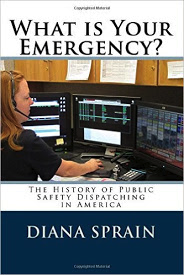
How is the Covid-19 effecting the Public Safety Answering Points (PSAPs)? The Center for Disease Control (CDC) guidelines has recommendations for 911 PSAPS which change as the pandemic progresses. A link has been set up for Dispatch Centers to check (see below). Meanwhile, how does the practicality of following the guidelines work? How is this virus changing the way an agency does business?
A recent webinar by the Associated Public Safety Communications Officials (APCO) had two guest speakers. One was a member of San Francisco’s 911 Dispatch. SF is a combined police, fire, and emergency medical services. Large PSAPs like San Francisco have plans in place for disaster as they are prone to things like earthquakes. Most Communication Centers are restricted areas, with limited access only. With Covid-19, the Dispatch was placed on a lock-down. Staff entering the building have their temperature taken. Dispatchers now wear face-makes after a Dispatcher tested positive. All consoles are disinfected at the beginning and end of shift. Dispatch personnel are staying at one console, instead of moving around as normal for rotation.
At our agency, it is different. We are small and have a stand-alone Dispatch. This allows us to have more control over the access. We disinfect at the beginning and end of shift. This includes wiping down external surfaces of equipment, workstations, and anything regularly touched. The stations are well beyond the recommended six feet, so that is not an issue. We haven’t resorted to wearing face masks yet. Only Dispatchers are allowed inside, unless a radio console requires emergency repair, then the technician can come in. We have to step outside to hand off paperwork.
The call volume is about the same, but the type of calls is slightly different. As our regional and main office are closed by the order of the Agency Director and Governor, we are receiving general inquiries on issues normally processed by those personnel. Field personnel are out with strict guidelines due to concern over the virus. Add to that the recent deaths of multiple officers in Nevada (NHP Sgt. Jenkins), Arizona, and Washington, along with shootings of officers in Nevada and Arizona, safety awareness is on high alert. Most of Nevada is rural with back-up hours, not minutes, away.
We are spending our time not on the radio or answering phone calls working on those shelved projects. The Department has urged all personnel to take advantage of the free online classes and sends out updates with the courses available. I’ve taken three in the last week of March. We require LE (officers and Dispatch) personnel to take the online CJIS Security course offered by the FBI. We have encouraged personnel to take FEMA ICS classes, too. Education is never a bad thing. I’ve been busy updating audit files in anticipation for the annual NCJIS/NCIC audits. No reason to wait, right?
We all keep saying we will get through this. It is a mantra repeated daily. Meanwhile, I keep reminding myself to enjoy the quiet because it won’t last. Once the “stay at home” order it lifted and folks resume life, activity will explode. Our guys will be back to the normal contacts and patrols – and I think they will try to make up for lost time, LOL.
Meanwhile, my pantry and craft room are looking good. The front yard project of placing the bricks around the tree is done. I’m just waiting for flowers to arrive at the nursery. After the storms are done, I can put out my fairy garden figures and set out grass seed. At least the TBR pile is getting smaller. It is nice to have time to read again.
https://www.cdc.gov/coronavirus/2019-ncov/hcp/guidance-for-ems.html
https://www.cdc.gov/coronavirus/2019-ncov/infection-control/index.html
–Diana Sprain
www.dianasprain.net
CHECKING ACCOUNT AND FINANCIAL SECURITY

Having contributed personal safety and security tips to this newsletter for several years now, I want to begin this article with a disclaimer.
I hope that none of you feel I am denouncing your intelligence about my topics. My intent is to remind you that we are all potential targets of crime, and everyone can always use an occasional reminder of how to reduce our chances of becoming a victim, or even possibly learn something that was never considered before.
In the last newsletter, I talked about how credit card scams were frequently conducted. This time I will give a little more insight into that topic, plus a few tips to make your checking and financial accounts a little more secure. I speak from experience of having once lost my wallet with several pieces of my ID, credit and debit cards; those things a man typically carries in his wallet and a woman in her purse.
First understand that being married, I carry no cash. However, I am allowed to carry credit and debit cards. Oh, also one blank check that my wife allows me to have for an emergency. That’s so sweet of her. Here is how it is. Fifty-four years ago, my wife and I started a workshop. I work and she shops. Okay, now that I have your attention, back to being serious.
We all know to cancel our credit cards immediately when they are lost or stolen. The key is having the toll-free numbers and your card numbers handy so you know whom to call. Keep a list of those where you can find them.
File a police report immediately in the jurisdiction where your credit cards were lost or stolen. This proves to credit providers that you were diligent, and this is the first step toward an investigation (if there ever is one).
But what is perhaps most important of all, promptly call the three national credit reporting organizations to place a “fraud alert” on your name and Social Security number. I had never thought of doing that until advised one time by a bank that called to tell me an application for credit was made over the Internet in my name. The alert means any company that checks your credit knows your information was stolen, and they have to contact you by phone to authorize new credit.
By the time I was advised to do this, almost two weeks after the attempted theft, all the damage had been done. There are records of all the credit checks initiated by the thieves’ purchases, none of which I knew about before placing the alert.
Here are the numbers you always need to contact about your credit cards or financial information being stolen:
1.) Equifax: 1-800-525-6285
2.) Experian (formerly TRW): 1-888-397-3742
3.) Trans Union: 1-800-680-7289
4.) Social Security Administration (fraud line): 1-800-269-0271
Now, a few tips about your checking account.
1. The next time you order checks have only your first and middle initials (instead of first and middle name) and the last name put on them. If someone takes your checkbook, they will not know how you sign your checks: just your initials or your first name. Your bank will know how you sign your checks.
2. When you are writing checks to pay on your credit card accounts, DO NOT put the complete account number on the “For” line. Instead, just put the last four numbers. The credit card company knows the rest of the number, and anyone who might be handling your check as it passes through all the check processing channels won’t have access to it.
3. Put your work phone # on your checks instead of your home phone. If you have a PO Box use that instead of your home address. If you do not have a PO Box, use your work address, providing your employer will allow that. I know this is obvious, but I’m going to say it anyhow; never have your SS# printed on your checks. You can add it if it is necessary, but if you have it printed, anyone can get it.
4. Place the contents of your wallet on a photocopy machine. Do both sides of each credit card, debit card, and anything with your ID or photo (e.g., company employee, Veterans Admin, medical, etc.). Even a copy of your driver’s license will be helpful should you get stopped by a police officer for a traffic violation before you can get a replacement from the DMV.
This way, you will know what you had in your wallet and all of the account numbers and phone numbers to call and cancel. Keep the photocopy in a safe place… not in your wallet or purse.
Stay Safe!
–Ron Corbin
A GOOD TIME TO BE WRITING—OR IS IT?
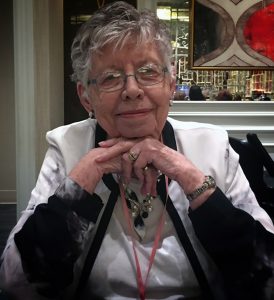
It certainly should be a good time for those of us to write who are having to shelter in place. So many author and book events have been cancelled or put on hold until there is a safer time to meet leaving us with more available time.
What I am seeing from my Facebook friends who are authors, many can’t seem to plant their butts in the chair in front of the computer to write.
For myself, I’ve done some writing, but not as much as I should. I’m missing my author friends and tend to do more checking in with them on Facebook than usual.
I also decided to do a .90 cent sale on Kindle for one of my books. (The sale will be over by the time the newsletter comes out.) This meant doing a lot of writing toward the promotion of this sale. I chose to do a favorite in my Rocky Bluff P.D. mysteries that I write as F. M. Meredith, Murder in the Worst Degree. I’ve done this kind of sale before as a means to get people interested in the series.
Another thing I’ve done is write about different books of mine and post to Facebook, which also has resulted in a few sales.
Though this is a form of writing, what I should be concentrating on is my work in progress. I’m near the end, and when I get to this part of writing a book, I always seem to have trouble finishing. I think, in part, it’s because I hate leaving the characters and the world they live in.
My hope is that you have done better than I have and used this extra time to really dig in there and get that next book done.
–Marilyn Meredith
Newsletter Editor
TEDIOUS TASKS FOR WRITERS
(From Thonie Hevron-two years I saw this post from successful cozy mystery author Nancy J. Cohen. I printed it out and posted it on my bulletin board above my pc. I’ve used it many times over. These days, I have more “brain dead” days than creative. Here’s where I look for something to feel productive. Maybe you will, too. Enjoy!)
By Nancy J. Cohen,
author of the Bad Hair Day Mysteries
Reprinted with permission of Nancy J. Cohen
From a post dated January 29, 2018
Consider these tasks when you feel brain dead or are too tired to think straight. Here’s a list of jobs for writers when you want to be productive without much mental effort.
• Organize your Internet Bookmarks/Favorites and verify that the links are still active.
• Verify that the links you recommend on your websites are still valid.
• Update mailing lists and remove bounces and unsubscribes.
• Back up your files. Email a copy of your WIP to yourself.
• Go through your online folders and erase old files.
• Delete photographs stored on your computer that you no longer need.
• Convert old file formats to current ones.
• Delete unnecessary messages from your email Inbox and Sent folders.
• Delete old contacts from your address book.
• Unfollow people from Twitter who are no longer following you.
• Sort your Twitter friends into Lists.
• Post reviews of books you’ve read to Goodreads and Amazon.
• Get caught up on listing tax deductible items for your writing expenses.
• Index your blog posts by date and subject so you have a quick reference.
• Read back issues of trade magazines and get caught up reading newsletters.
• Organize your physical book collection.
• Donate books you’ll never read again and don’t want to keep.
• Pare down your digital TBR pile. Are you really going to read all those free downloads?
• Sort through the piles of papers on your desk. Act on them, file them, or throw them out.
• Work on blogs like this one.
Link to Nancy’s blog: https://nancyjcohen.com/tedious-tasks-for-writers-2/
–by Nancy J. Cohen,
author of the Bad Hair Day Mysteries
Reprinted with permission of Nancy J. Cohen
SNOW, NO

The first snow fall of the winter is exciting to some people. A pure white carpet surrounded with snow covered branches on every tree in sight. Even the snow on the rooves of the houses look majestic. You wait to see if it’s going to stick to the streets and roads. If you have a driveway, you start looking for your snow shovels. If it’s a weekend and you don’t have to work, you sit back and enjoy the beauty of the season. However, if you do have to work, you grab a snow shovel and start removing it from your vehicle’s pathway. This activity has resulted in a few heart attacks, but definitely a significant amount of sweat while you’re bundled up against the cold. Just when you think you have finished preparing your exit to the street, a snow plow comes along and pushes another mound of snow to block your escape. Now the snow is no longer that bright white, but more a brown, sometimes even black color and the sides of your driveway seem like they have a black or brown border. Don’t get me wrong, I’m happy that a snow plow is plowing my street. I just wish it would skip my driveway.
The next project is freeing your vehicle from the clutches of the white stuff. If it’s cold enough, chances are that under the pure white blanket is hardened ice adhering to your windshield and windows and side mirrors. I have broken many a scraper trying to break through the ice. I turn my car on and hope that the heat of the car will assist with the ices removal. Depending on the amount of snow that fell, you also have snow on your hood and the roof of your vehicle. The true dedicated snow removers will clean every bit of snow from their hood and the rooves of their cars, much to the delight of the other drivers they might encounter. The lazier snow removers will clear off enough for them to see ahead and hope that the motion of the vehicle will blow off the remaining snow. Sometimes this results in vehicles trailing behind being bombarded with an avalanche of snow. Many times, snow from the hood creates visibility problems as it blows back against the windshield.
Snow creates many problems for law enforcement as well as firefighters. If there is a large amount of snow it is difficult to get where the problem exists and especially if the snow is accompanied by ice. Traffic accidents abound and, God forbid, if there are power outages. In the dark of night, criminals, even in the snow, find ways to commit crimes. Because law enforcement and firefighters are considered to be essential employees they trek through the worse of weather to be on the job to help with the many emergencies that occur in bad weather.
At the mere mention of a possible snow storm, grocery stores are raided by fearful citizens afraid they might run out of bread or milk or some other necessary commodity. There usually is a run on people buying generators and forget about salt to melt the snow, that only lasts a few hours.
I personally don’t like snow. It’s pretty to look at, but the multitude of problems it causes is not worth the effort. For kids, snow is great. A big enough storm will close schools. Stranded at home families many times go out and make snowmen or other creations with the white stuff. Snowball battles are great fun, except when the snow slips through your clothing or a well- placed, well packed ball hits you up the side of your head. There have been many songs written about snow, especially involving Christmas. The song “White Christmas,” is the biggest selling song of all time. Just think of “Jingle Bells,” or “Frosty the Snowman.”
My darling loves the snow. She gets so excited when the flakes start falling. She takes pictures of it and will occasionally walk out into it. I on the hand have to drive through it, have to shovel it and tread when the next storm comes. Fortunately, at my age I don’t shovel it anymore, doctor’s orders, but I have to get someone else to do it. Right now my daughter gladly does the job and during big storms she seems to attract the attention of able bodied men to help.
As everyone in the family knows, I want to move to Florida where there is no snow. A few hurricanes, maybe, but mostly sunny days, wearing t-shirts and shorts. If my darling wants to see snow, we can always visit someplace with snow for short time. I had my time with the white stuff. If I get old enough where I can no longer drive and don’t have to traipse through it with the constant fear of falling, maybe then I’ll a better appreciation of the white stuff. Right now, the only snow I want to see is on my T.V.
–Joseph Haggerty
ONE THING LEADS TO ANOTHER

In the early seventies, I started doing a lot of reading. I jumped from one author or genre to another, fiction to non-fiction and back. The change in direction might be prompted by something I liked in the current reading.
Again, here is one thing that led to another, an actor leading me from one film to three others, and new books to read. If you haven’t seen these films, I hope you will try.
The film, In Order of Disappearance*, is one of my favorites. The Norwegian director, Hans Peter Moland, mixes blood and violence with dark humor in this tale of Norwegian and Serbian dope dealers, murder, and snowplows in Norway. The vegan, environmentally sensitive, Norwegian dope boss, “The Count,” is played by a Norwegian actor new to me, Pal Sverre Hagen. His performance is an outstanding combination of comedy and murder, as good as any I can remember.
Looking at Hagen’s filmography on Wikipedia, I found another film of his I could get from Netflix, A Conspiracy of Faith, which is one of three made from the Department Q books of Danish author Jussi Adler-Olsen. Hagen does not disappoint in this film, playing another creepy guy, this time without the humor. My wife, Fran, and I liked it so much we ordered the other two Department Q DVDs.
In some ways the Department Q films are familiar police procedural fare. Two incompatible detectives, new partners, are forced to fight each other and Danish police bureaucracy while investigating cold cases. One actor who is new to me, Nikolaj Lie Kaas, plays a detective who could be described as an autism-spectrum Harry Bosch. The saner detective is played by Fares Fares, who moved from Lebanon to Sweden at age fourteen. Those who have seen Zero Dark Thirty will remember him as the Seal interpreter.
These Department Q films are very well made, not like low-budget TV mysteries. We liked all three and are hoping more Department Q films will be made.
We have yet to read any of the books by Jussi Adler-Olsen, but they’re on our list.
*(Moland repeated In Order of Disappearance in English as Cold Pursuit, set in the western United States with Liam Neeson replacing Stellan Skarsgard.)
https://en.wikipedia.org/wiki/In_Order_of_Disappearance
https://en.wikipedia.org/wiki/Jussi_Adler-Olsen
https://en.wikipedia.org/wiki/Department_Q_(film_series)
–Jim Guigli
MEMBER NEWS
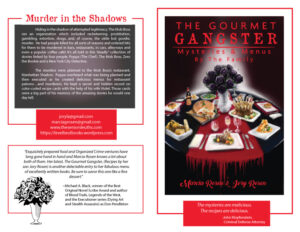 The Gourmet Gangster is a labor of love, a mother-son collaboration of short stories paired with mouth-watering recipes, inspired by their shared family experiences. Marcia and Jory Rosen have selected the perfect menu to accompany their tales of murder, mayhem, and the Mob, told through the eyes of a gangster’s daughter.
The Gourmet Gangster is a labor of love, a mother-son collaboration of short stories paired with mouth-watering recipes, inspired by their shared family experiences. Marcia and Jory Rosen have selected the perfect menu to accompany their tales of murder, mayhem, and the Mob, told through the eyes of a gangster’s daughter.
Victor Barr was a bookie and owner of a successful gambling spot. When he was ready to move on from that life, he opened a bar-restaurant in the heart of Main Street in Buffalo, New York. His love of food was a great influence on his family, particularly his daughter, Marcia, and grandson, Jory. The Rosen Family continues that tradition through these stories and recipes.
A sampling of recipes in The Gourmet Gangster include Chicken Piccata Caper, The Sacrificial Lamb, Fowl Play, and The Quiche (Kiss) of Death. We suggest pairing them with the stories “Recipes for Murder,” “Malled to Death,” “He’s a Dead Duck,” and “Make Mine Murder.” Bon Appetite!
–Marcia Rosen
Coming Soon: DEATH WAITS IN THE DARK
Resounding praise for Death Waits in the Dark:
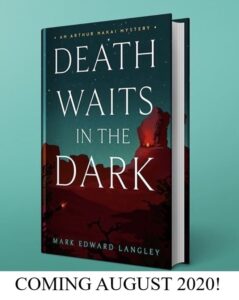 With Death Waits in the Dark, Mark Edward Langley offers readers an utterly compelling portrait of human beings struggling to deal with the aftermath of great trauma. Langley writes about the great Southwest with a loving eye for detail that fans of Tony and Anne Hillerman will readily embrace. I was utterly captured by this fine second novel in the Arthur Nakai series. Along with those who are already fans, I can only hope that there will be many more stories to come. I recommend this book with a full heart.
With Death Waits in the Dark, Mark Edward Langley offers readers an utterly compelling portrait of human beings struggling to deal with the aftermath of great trauma. Langley writes about the great Southwest with a loving eye for detail that fans of Tony and Anne Hillerman will readily embrace. I was utterly captured by this fine second novel in the Arthur Nakai series. Along with those who are already fans, I can only hope that there will be many more stories to come. I recommend this book with a full heart.
—William Kent Krueger, author of This Tender Land and Ordinary Grace
Death Waits in the Dark tells a gritty story of betrayal, deceit, and danger through the eyes of Navajo protagonist Arthur Nakai. The tightly written noir plot moves from scene to scene like a thriller, building suspense in every page.
—Anne Hillerman, New York Times bestselling author of The Tale Teller
In Death Waits in the Dark, Mark Edward Langley’s style is reminiscent of the great John D. MacDonald. Don’t miss this excellent second novel in this entertaining series. ~ Michael A. Black, author of Legends of the West, and Dying Art and Cold Fury in the Executioner series (as Don Pendleton).
–Mark Edward Langley
Sometimes the Animals Win!
In the midst of these anxious times, one fascinating note is that wild animals are flourishing and taking back some places formerly far too crowded with humans for animals to thrive. If that gave you a tickle, as it did me, you may enjoy reading about two brothers’ fight to save wild animals threatened in a faux safari camp in North Idaho. It’s my first novel, and it put me on a list of Idaho’s top three emerging fiction writers back in 2013. Mustard’s Last Stand is available on Amazon as an ebook, on Kindle Unlimited, in paperback and as an audio book. I guarantee giggles and a happy ending, good things these days.
Here’s the link: https://amzn.to/33rMZEK
–Kathy McIntosh
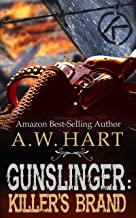 Michael A. Black had a new western come out on April 1st, written under the name of A.W. Hart. It’s part of a series he’s doing. The title is Gunslinger: Killer’s Brand.
Michael A. Black had a new western come out on April 1st, written under the name of A.W. Hart. It’s part of a series he’s doing. The title is Gunslinger: Killer’s Brand.
Shortly after finding a murdered man with a strange brand on his forehead, Connor and Abby Mack, along with their mentor, River Hicks, come to the aid of a black settler being menaced by a band of gunmen.
Upon arrival in town to report the murder and the incident, they’re confronted by a powerful rancher and his four sons who have aspirations of taking over the entire territory.
The beleaguered sheriff is of little help, and the settler is charged with the branded man’s murder and is also accused of being the leader of a band of masked killers, known as the Phantom Riders, who have been terrorizing the countryside. Intent on finding the truth, Connor, Abby, and Hicks start their own investigation, but they’re unaware that the three of them are being stalked by a cold-blooded assassin who specializes in long-range killing. Battling against overwhelming odds the trio engages in a desperate struggle to uncover the truth behind the killer’s brand.
To buy:
https://www.amazon.com/Gunslinger-Killers-Brand-W-Hart-ebook/dp/B084L2G42P/ref=sr_1_1?dchild=1&keywords=The+Gunslinger%2C+Killer+Brand&qid=1587130870&s=books&sr=1-1
Also from Joseph Haggerty:
My darling and I are in Florida. We came here in mid February and were planning to return home around the first of April. It is now mid April and it looks like we will be here until May 1, or possibly longer, depending on the progress in combating COVID-19. Anyway, I brought four books for me to read while we were here. I read them and read a fifth one that my darling had. I borrowed a book from my stepson and I also had one of my books, SHAME, The Story of a Pimp.
I don’t know how many of you have gone back and read the books you wrote and had published, but this was the first time in a very long time since I read my book, SHAME. I received the best review of the book from a 15-year-old girl who escaped from the prostitution streets of America. She was in what I consider the best program in the country for empowering these young women through education and learning independent living, CHILDREN OF THE NIGHT(COTN). I had sent the book to the director and founder of COTN, Dr. Lois Lee, who I’ve known for over 40 years. However, Lois was in the process of writing her own book and didn’t want my book to influence her writing, so she gave the book to one of the girls in the program and told her to write a book report on it. In addition to the book report the young lady wrote me a letter and said she identified with everything in the book.
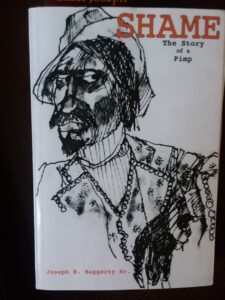 SHAME, as you may know is about a pimp. How his childhood lead to his desire to become a pimp. How he became a pimp. What the pimping life is like and the women he used and abused. I take the reader from the West coast to the East coast and several cities in-between. The book contains a lot of sex and violence because that is what happens in the world of street prostitution. Although this book is fiction there are a number of cases I was involved in throughout the story. I must admit reading my book again reminded me why I wrote it in the first place. Hollywood’s glamorized perception of prostitution leads one to believe that’s not that bad, but pimps are biggest child predators in the world and human trafficking is big business.
SHAME, as you may know is about a pimp. How his childhood lead to his desire to become a pimp. How he became a pimp. What the pimping life is like and the women he used and abused. I take the reader from the West coast to the East coast and several cities in-between. The book contains a lot of sex and violence because that is what happens in the world of street prostitution. Although this book is fiction there are a number of cases I was involved in throughout the story. I must admit reading my book again reminded me why I wrote it in the first place. Hollywood’s glamorized perception of prostitution leads one to believe that’s not that bad, but pimps are biggest child predators in the world and human trafficking is big business.
As a retired vice detective that concentrated my efforts on investigating and arresting these vultures of the street. I would recommend, self-promotion, reading this book if you have any desire to create your own characters involved in prostitution.
From Pete Klismet:
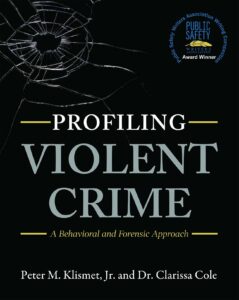 In this award-winning, international best-seller, FBI Diary: Profiles of Evil, an original FBI criminal profiler takes us inside the revolutionary and ground-breaking training of the FBI’s most select group of Special Agents.
In this award-winning, international best-seller, FBI Diary: Profiles of Evil, an original FBI criminal profiler takes us inside the revolutionary and ground-breaking training of the FBI’s most select group of Special Agents.
For the very first time, enter the mind of an FBI Special Agent as he investigates murders and tracks down real killers.
https://www.amazon.com/FBI-Diary-Peter-Klismet-Jr/dp/1799044130/ref=sr_1_fkmr0_1?dchild=1&keywords=fbi+diary%2C+profiles+of+evil+by+peter+kismet&qid=1587133793&s=books&sr=1-1-fkmr0
Also from Pete Klismet:
Presented from the perspectives of a former FBI profiler and a forensic violence-risk expert, Profiling Violent Crime: A Behavioral and Forensic Approach educates readers about the nature of criminal profiling including how it works, the techniques it draws on, the types of offenders it applies to, and the psychological make-ups of those offenders.
Drawing from technique, as well as from theory and the latest clinical research, Profiling Violent Crime delves into precisely what it means to profile. Students learn what it’s like to be on the ground as an FBI profiler, dispelling myths and detailing the actual process. Subsequent chapters detail crime scene analysis; determination of the type of offender that may be at work; the fascinating interplay between mental illness and criminality; and breakdowns of the various types of criminal offenders including stalkers, murderers, rapists, mass murderers, and serial killers. The book also offers multiple real-life case examples to shed light further into the criminal mind.